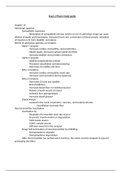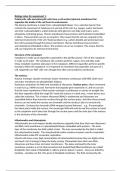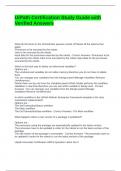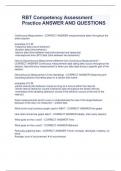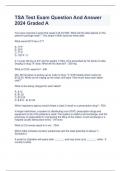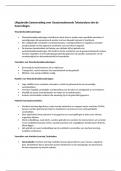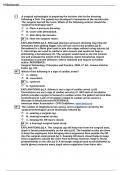INTERNATIONAL MANAGEMENT:
SUMMARY ARTICLES
Inhoud
Dimensions and Dynamics of National Culture: Synthesizing Hofstede With Inglehart..........................................3
1. Introduction.......................................................................................................................................................3
2. Hofstede’s national cultural dimensions and the critique of his framework...................................................4
3. Inglehart’s theory of cultural change................................................................................................................5
4. Contextualizing and labeling of the dimensions...............................................................................................6
5. Inglehart’s Dynamics & 6. Explaining national cultural differences..................................................................7
7. conclusion..........................................................................................................................................................7
Global standardization or national differentiation of HRM practices in multinational companies? A comparison
of multinationals in five countries.............................................................................................................................9
Introduction...........................................................................................................................................................9
Researching standardization-differentation in MNCs...........................................................................................9
Why do we find similarities and differences among mncs.................................................................................10
Discussion............................................................................................................................................................11
Conclusion...........................................................................................................................................................12
Corporate governance and national institutions: A review and emerging research data......................................13
Introduction.........................................................................................................................................................13
From the principal-agency dichotomy towards a comparative institutional analysis of corporate governance
.............................................................................................................................................................................13
Corporate governance and legal institutions......................................................................................................14
The governance roles of dominant shareholders and investor protection........................................................15
Executive compensation debates and informal institutions...............................................................................16
Comparative institutional analysis as an emerging research agenda.................................................................16
The genealogy of lean production..........................................................................................................................18
A brief history of time: the Toyota production system.......................................................................................19
The inauguration of the international motor vehicle program..........................................................................19
The development of assembly plant benchmarking methodology....................................................................19
The role of transplants in the knowledge transfer.............................................................................................20
From just-in-time manufacturing to lean production.........................................................................................20
Expansion of the research focus after 1900........................................................................................................21
Concluding thoughts...........................................................................................................................................22
1
,From typology to taxonomy: A configurational analysis of national business systems and their explanatory
power......................................................................................................................................................................22
The national business systems framework as typology......................................................................................23
From a typology to a taxonomy of business systems.........................................................................................24
Methodology.......................................................................................................................................................25
Discussion............................................................................................................................................................25
conclusion............................................................................................................................................................26
The construct of institutional distance through the lens of different institutional perspectives: review, analysis
and recommendations............................................................................................................................................26
Theoretical perspectives in institutional distance research...............................................................................27
The state of institutional distance research........................................................................................................28
The tortuous evolution of the role of culture in IB research: what we know, what we don’t know, and where we
are headed..............................................................................................................................................................30
What we know: overview of approaches to the use of culture in IB research and reflections of the evolution
of the field...........................................................................................................................................................31
Narrow conceptualization of Culture and Fragmented Approach to the Study of Culture................................32
Failure to adopt a multilevel approach and insufficient attention to level of analysis.......................................33
Insufficient attention to context and process.....................................................................................................33
Failure to adopt a more dynamic view of culture...............................................................................................34
Equating country with culture and failure to explore other containers of the future.......................................34
Western-centric...................................................................................................................................................35
Where we are headed: important trends and directions for future research...................................................35
De-globalization: theories, predictions and opportunities for internationa business research.............................38
The state of de-globalization...............................................................................................................................39
Liberalism............................................................................................................................................................39
Realism................................................................................................................................................................41
Implications for IB research................................................................................................................................42
Capitalizing on the uniqueness of internationaL business: Towards a theory of place, space and organization. .46
History: IB was unique, initially...........................................................................................................................47
Ib is still unique but for different reasons...........................................................................................................47
2
,DIMENSIONS AND DYNAMICS OF NATIONAL CULTURE: SYNTHESIZING HOFSTEDE WITH
INGLEHART
1. INTRODUCTION
Inglehart: generational shift in cultural orientations (in Western democracies)
- Shift of priority from existential security (materialist values) to expressive freedom (postmaterialist
values)
- Utility ladder of freedoms: when security and freedom are short in supply Priority of security
(necessity to survive). Feeling secure freedom (essential to thrive)
Criticism: flawed dimensional understanding of culture that reduces cross-national variation to two dimensions
+ overestimation of generational replacement dynamic in cultural change
Inglehart & Welzel: revised theory of modernization
Evolutionary theory of emancipation: key qualifications of emancipatory value change
- Self-driven automatism human mind adjusts to changing existential conditions
- Not culture specific but species-wide universalism of humanity
- National populations’ subjective life orientations vary on continuum from ‘preventive closure
mentality’ (= people emphasize uniformity, discipline, hierarchy and authority) to a ‘promotive
openness’ mentality (= diversity, creativity, liberty and autonomy)
- Objective living conditions vs. li
Utility-value link: adjust subjective values to life’s objective utilities
- Vital for human liveability: keeping goals in touch with reality
- Precondition for development: makes moral progress possible
- Humans hard-wired to stay on lower rungs Priority on security. However, ascension once
opportunity finds place priority on freedom
Study: Combination of Hofstede and Inglehart’s study (three cultural dimensions + examination of cultural
change)
Methodology:
- Follow Inglehart’s cohort approach + asses intergenerational cultural change
- Five birth cohorts between 1900 – 200 Analyse cultural change in cross-cultural framework
Three dimensions:
1) Collectivism-Individualism mimics Hofstede’s Individualism dimension & Power Distance
2) Duty – Joy Hofstede’s Restraint – Indulgence
3) Distrust – Trust Hofstede’s Uncertainty avoidance
Collectivism and Duty (More adaptive to existential pressures) vs. Individualism and Joy (adaptive to existential
opportunities)
Evolutionary theory of emancipation: objective living conditions vs. subjective life orientations
3
, - Preventive closure is adaptive under pressing threats, while promotive openness is adaptive in
presence of promising opportunities
- Emphasis on collectivism and duty preventive closure mentality, prevails under conditions
favouring preventive closure (existential threats)
- Distrust-Trust: shift from existential pressures to opportunities is supposed to increase horizontal trust
in other people, but decreases vertical trust in hierarchical institutions Ambivalent, no clear
direction
Findings of applying Inglehart’s dynamic concept to three dimensions:
- Orientations are shifting over the generations: (a) from Collectivism toward Individualism and
(b) from Duty toward Joy—to the extent that socioeconomic development improves objective living
conditions that way. By contrast, there is (c) no clear shift from Distrust toward Trust or vice versa, no
matter how socioeconomic development proceeds.
- Socioeconomic development + country-specific are forces in driving generational shifts toward
Individualism and Joy
2. HOFSTEDE’S NATIONAL CULTURAL DIMENSIONS AND THE CRITIQUE OF HIS FRAMEWORK
Hofstede: reduce cross-national cultural diversity to country scores framework consists of six dimensions
First four dimensions Data from IBM
- Power Distance vs. Closeness: extent to which people reject (distance) or appreciate (closeness)
hierarchies and the authority
- Uncertainty Avoidance vs. Acceptance: how strong is the need to operate under well-organized and
highly predictable circumstances (avoidance) <-> How much able to improvise + cope with unplanned
settings (acceptance)
- Individualism vs. collectivism: extent to which people see themselves autonomous personalities
(individualism) <-> members of tight communities (collectivism)
- Masculinity vs. femininity: emphasis on caring for others, solidarity, cooperation (femininity) <->
success, achievement and competition (masculinity)
Other dimensions (added later) data of the WVS, data from IBM too western biased
- Long-Term vs. Short-Term (LTO - initially called Confucian Dynamism): future-oriented and acceptance
of delayed gratification of individual effort, characterized by strong perseverance and thrift (long term)
<-> ‘here and now’ mentality + seize every opportunity (short-term)
- Indulgence vs. Restraint (IVR): degree of which people are inclined to express emotions and enjoy
momentary pleasures (Indulgence) <-> need for discipline and strict codes of conduct (restraint)
Criticism (p. 1474): too stable nation of national culture + overestimation of number of dimension,
misinterpretation of meaning
- Representativeness: US-centric and IBM-centric
- Labelling of dimensions + validity of content: Individualism vs. collectivism not capturing content of
underlying items properly
- Individualism vs. collectivism and Power Distance vs. Closeness are one factor
4
SUMMARY ARTICLES
Inhoud
Dimensions and Dynamics of National Culture: Synthesizing Hofstede With Inglehart..........................................3
1. Introduction.......................................................................................................................................................3
2. Hofstede’s national cultural dimensions and the critique of his framework...................................................4
3. Inglehart’s theory of cultural change................................................................................................................5
4. Contextualizing and labeling of the dimensions...............................................................................................6
5. Inglehart’s Dynamics & 6. Explaining national cultural differences..................................................................7
7. conclusion..........................................................................................................................................................7
Global standardization or national differentiation of HRM practices in multinational companies? A comparison
of multinationals in five countries.............................................................................................................................9
Introduction...........................................................................................................................................................9
Researching standardization-differentation in MNCs...........................................................................................9
Why do we find similarities and differences among mncs.................................................................................10
Discussion............................................................................................................................................................11
Conclusion...........................................................................................................................................................12
Corporate governance and national institutions: A review and emerging research data......................................13
Introduction.........................................................................................................................................................13
From the principal-agency dichotomy towards a comparative institutional analysis of corporate governance
.............................................................................................................................................................................13
Corporate governance and legal institutions......................................................................................................14
The governance roles of dominant shareholders and investor protection........................................................15
Executive compensation debates and informal institutions...............................................................................16
Comparative institutional analysis as an emerging research agenda.................................................................16
The genealogy of lean production..........................................................................................................................18
A brief history of time: the Toyota production system.......................................................................................19
The inauguration of the international motor vehicle program..........................................................................19
The development of assembly plant benchmarking methodology....................................................................19
The role of transplants in the knowledge transfer.............................................................................................20
From just-in-time manufacturing to lean production.........................................................................................20
Expansion of the research focus after 1900........................................................................................................21
Concluding thoughts...........................................................................................................................................22
1
,From typology to taxonomy: A configurational analysis of national business systems and their explanatory
power......................................................................................................................................................................22
The national business systems framework as typology......................................................................................23
From a typology to a taxonomy of business systems.........................................................................................24
Methodology.......................................................................................................................................................25
Discussion............................................................................................................................................................25
conclusion............................................................................................................................................................26
The construct of institutional distance through the lens of different institutional perspectives: review, analysis
and recommendations............................................................................................................................................26
Theoretical perspectives in institutional distance research...............................................................................27
The state of institutional distance research........................................................................................................28
The tortuous evolution of the role of culture in IB research: what we know, what we don’t know, and where we
are headed..............................................................................................................................................................30
What we know: overview of approaches to the use of culture in IB research and reflections of the evolution
of the field...........................................................................................................................................................31
Narrow conceptualization of Culture and Fragmented Approach to the Study of Culture................................32
Failure to adopt a multilevel approach and insufficient attention to level of analysis.......................................33
Insufficient attention to context and process.....................................................................................................33
Failure to adopt a more dynamic view of culture...............................................................................................34
Equating country with culture and failure to explore other containers of the future.......................................34
Western-centric...................................................................................................................................................35
Where we are headed: important trends and directions for future research...................................................35
De-globalization: theories, predictions and opportunities for internationa business research.............................38
The state of de-globalization...............................................................................................................................39
Liberalism............................................................................................................................................................39
Realism................................................................................................................................................................41
Implications for IB research................................................................................................................................42
Capitalizing on the uniqueness of internationaL business: Towards a theory of place, space and organization. .46
History: IB was unique, initially...........................................................................................................................47
Ib is still unique but for different reasons...........................................................................................................47
2
,DIMENSIONS AND DYNAMICS OF NATIONAL CULTURE: SYNTHESIZING HOFSTEDE WITH
INGLEHART
1. INTRODUCTION
Inglehart: generational shift in cultural orientations (in Western democracies)
- Shift of priority from existential security (materialist values) to expressive freedom (postmaterialist
values)
- Utility ladder of freedoms: when security and freedom are short in supply Priority of security
(necessity to survive). Feeling secure freedom (essential to thrive)
Criticism: flawed dimensional understanding of culture that reduces cross-national variation to two dimensions
+ overestimation of generational replacement dynamic in cultural change
Inglehart & Welzel: revised theory of modernization
Evolutionary theory of emancipation: key qualifications of emancipatory value change
- Self-driven automatism human mind adjusts to changing existential conditions
- Not culture specific but species-wide universalism of humanity
- National populations’ subjective life orientations vary on continuum from ‘preventive closure
mentality’ (= people emphasize uniformity, discipline, hierarchy and authority) to a ‘promotive
openness’ mentality (= diversity, creativity, liberty and autonomy)
- Objective living conditions vs. li
Utility-value link: adjust subjective values to life’s objective utilities
- Vital for human liveability: keeping goals in touch with reality
- Precondition for development: makes moral progress possible
- Humans hard-wired to stay on lower rungs Priority on security. However, ascension once
opportunity finds place priority on freedom
Study: Combination of Hofstede and Inglehart’s study (three cultural dimensions + examination of cultural
change)
Methodology:
- Follow Inglehart’s cohort approach + asses intergenerational cultural change
- Five birth cohorts between 1900 – 200 Analyse cultural change in cross-cultural framework
Three dimensions:
1) Collectivism-Individualism mimics Hofstede’s Individualism dimension & Power Distance
2) Duty – Joy Hofstede’s Restraint – Indulgence
3) Distrust – Trust Hofstede’s Uncertainty avoidance
Collectivism and Duty (More adaptive to existential pressures) vs. Individualism and Joy (adaptive to existential
opportunities)
Evolutionary theory of emancipation: objective living conditions vs. subjective life orientations
3
, - Preventive closure is adaptive under pressing threats, while promotive openness is adaptive in
presence of promising opportunities
- Emphasis on collectivism and duty preventive closure mentality, prevails under conditions
favouring preventive closure (existential threats)
- Distrust-Trust: shift from existential pressures to opportunities is supposed to increase horizontal trust
in other people, but decreases vertical trust in hierarchical institutions Ambivalent, no clear
direction
Findings of applying Inglehart’s dynamic concept to three dimensions:
- Orientations are shifting over the generations: (a) from Collectivism toward Individualism and
(b) from Duty toward Joy—to the extent that socioeconomic development improves objective living
conditions that way. By contrast, there is (c) no clear shift from Distrust toward Trust or vice versa, no
matter how socioeconomic development proceeds.
- Socioeconomic development + country-specific are forces in driving generational shifts toward
Individualism and Joy
2. HOFSTEDE’S NATIONAL CULTURAL DIMENSIONS AND THE CRITIQUE OF HIS FRAMEWORK
Hofstede: reduce cross-national cultural diversity to country scores framework consists of six dimensions
First four dimensions Data from IBM
- Power Distance vs. Closeness: extent to which people reject (distance) or appreciate (closeness)
hierarchies and the authority
- Uncertainty Avoidance vs. Acceptance: how strong is the need to operate under well-organized and
highly predictable circumstances (avoidance) <-> How much able to improvise + cope with unplanned
settings (acceptance)
- Individualism vs. collectivism: extent to which people see themselves autonomous personalities
(individualism) <-> members of tight communities (collectivism)
- Masculinity vs. femininity: emphasis on caring for others, solidarity, cooperation (femininity) <->
success, achievement and competition (masculinity)
Other dimensions (added later) data of the WVS, data from IBM too western biased
- Long-Term vs. Short-Term (LTO - initially called Confucian Dynamism): future-oriented and acceptance
of delayed gratification of individual effort, characterized by strong perseverance and thrift (long term)
<-> ‘here and now’ mentality + seize every opportunity (short-term)
- Indulgence vs. Restraint (IVR): degree of which people are inclined to express emotions and enjoy
momentary pleasures (Indulgence) <-> need for discipline and strict codes of conduct (restraint)
Criticism (p. 1474): too stable nation of national culture + overestimation of number of dimension,
misinterpretation of meaning
- Representativeness: US-centric and IBM-centric
- Labelling of dimensions + validity of content: Individualism vs. collectivism not capturing content of
underlying items properly
- Individualism vs. collectivism and Power Distance vs. Closeness are one factor
4

